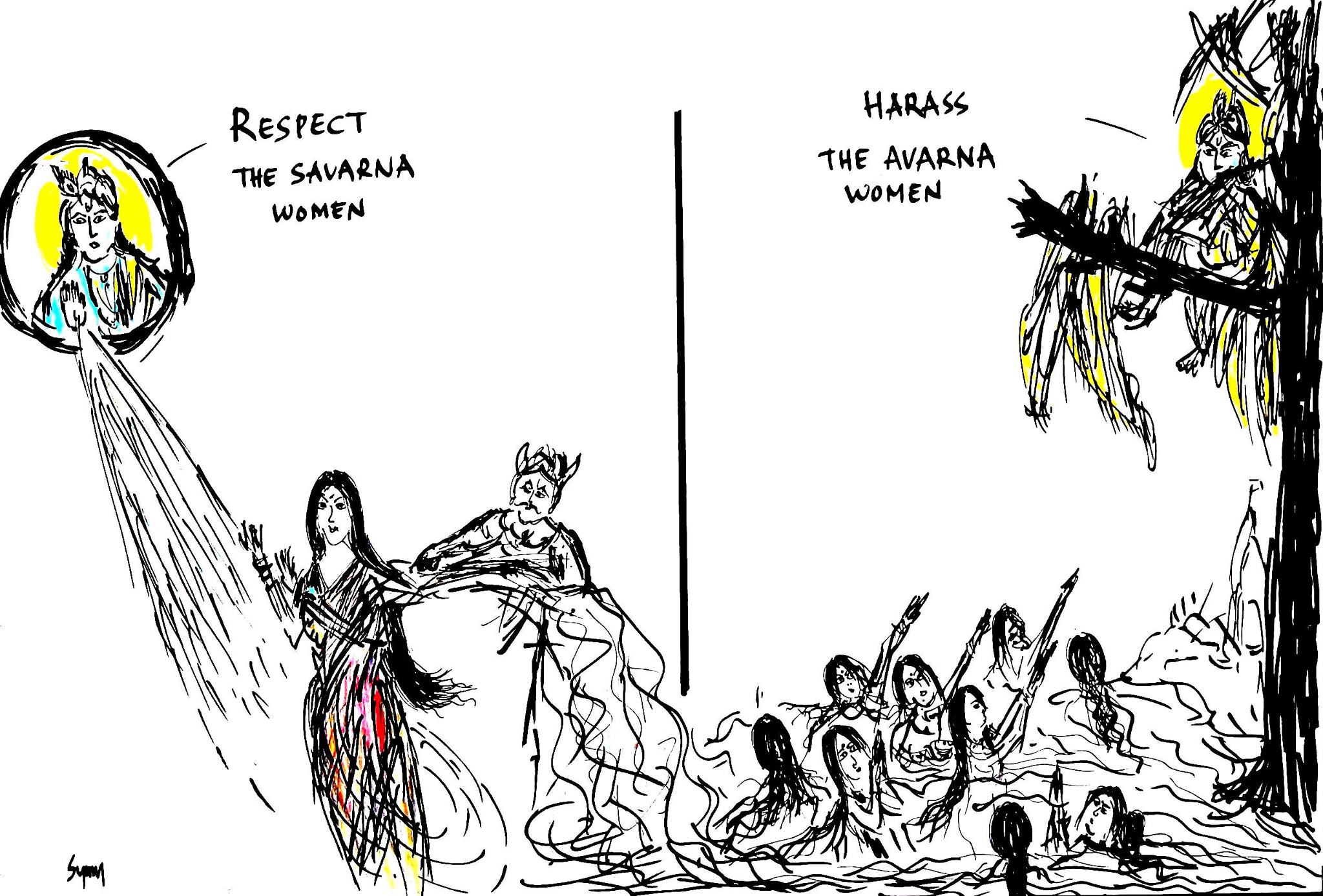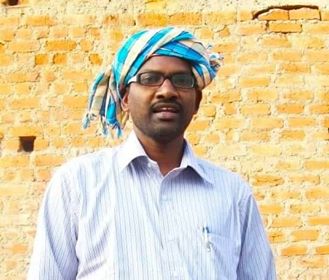Nirban Ray
 Vinayak Damodar Savarkar, who is being forcefully portrayed as the Father of Prime Minister Modi’s New India after the 2019 electoral victory of BJP, has conceptualized his idea of India, a Hindu Rashtra by means of three disjointed but intertwined narrative of Indian life and civilization.
Vinayak Damodar Savarkar, who is being forcefully portrayed as the Father of Prime Minister Modi’s New India after the 2019 electoral victory of BJP, has conceptualized his idea of India, a Hindu Rashtra by means of three disjointed but intertwined narrative of Indian life and civilization.
First, Savarkar talks about a singular one-for-all history of India. The history of India for Savarkar is not merely about remembering and forgetting past events. Rather history holds material significance for Savarkar because the history of India is the history of the continuous flow of an Indian or Hindu life-blood. This Indian/Hindu life blood originated for Savarkar from the womb of Indus valley civilization, has overcome numerous barbaric foreign invasions and it keeps on flowing to reach its destiny. That is – to flourish itself as one India one Nation.
Second, Savarkar traces out an Indian/Hindu mode of being, an Indian/Hindu modernity from the contingencies and multiplicity of diverse Hindu lifeworlds and life habits. He talks about a common culture, common civilization, common blood, common laws & rites which every Indians/Hindus share in their everyday life and asserts that India is a one, indivisible and a homogenous Hindu nation. And the duty of every Indians is to protect India not only for India’s sake but for their own very existence as their mode of being, their modernity is Hindu modernity.
Third, since India is a religious land and people in India possess unique connection to faiths, without talking about an Indian religion it becomes burdensome to talk about a unified, indivisible India. Hindu people in India are divided by their diverse faiths therefore, Savarkar reconciles all multiplicity of faiths by talking about a Hindu Dharma, a religion Savarkar discovers after liberating religion from its religiosity. The Hindu Dharma for Savarkar is not merely a religious faith, in truth it is Hindu Dharma which for Savarkar shapes the very essence of Indian being. The people, the Hindu people in and through their spiritual cravings gave birth to the Hindu Dharma. And the rivers, mountains and air of India for Savarkar echoes with Hindu Dharma to give voice to one India, one Nation. Islam for Savarkar is an Other religion which carries in itself a desire to establish an Islam empire everywhere and since love of Muslims for India is divided love , Muslims for Savarkar stand outside the essence of Indian being.
All of these three narratives are ordered by Savarkar in such a way that when combined together it produces a singular, homogeneous, one for all idea of ‘one India one nation’. PM Modi’s New India is nothing but the outright manifestation of what Savarkar conceptualizes as Hindu Rashtra.
Putting irony to its death PM Modi borrows the term “New India” from the late PM Nehru’s use of the term “New India”. And irony dies here because the way and means through which Nehru talks about ‘one India one Nation’ in his discovery of New India, is devastatingly identical to that of the ways and means used by Savarkar when he talks about a Hindu Rashtra.
The Hindu Rashtra
But, what is problematic about ‘one India one nation’? The idea that India is a homogenous idea or nation is not only problematic but the idea itself is a barbaric idea because it robs the people who actually inhabit the soil and land of Indian subcontinent their Consent. Following the footsteps of PM Nehru’s discovery of India, Savarkar discovers his Hindu Rashtra without the consent of the people whom he considers as Hindus/Indians. And following Savarkar PM Modi has gone a step further and initiated a crusade by means of Indian state to materialize the idea of an old ‘new India’/ Hindu Rashtra into a dark reality.
It is in this political juncture when India fights against itself, JNUSU election 2019-20 is about to take place.
The winterfall of JNU
After the 9th February 2016 event in JNU, JNU has been deliberately projected as a fort of anti-nationalism. The national/anti-national narrative which thrived after that event provided the Hindu nationalist BJP more strength instead of posing any threat or challenge to their idea and practice of a Hindu Rashtra. In fact, after the savage 2019 electoral victory Amit Shah vigorously asserted the need of keeping alive the national/anti-national narrative, gifted to him by JNU comrades, for the sake of making a ‘new India’.
But why instead of becoming a challenge, threat to the Hindu nationalist narrative, the red politics of JNU has become complicit in strengthening the Hindu Rashtra narrative?
The discourse of red politics in JNU, particularly after the 9th February event has centered itself on fighting the fascist Hindu nationalist forces. But the contradiction of red politics is that while fighting fascism the red politics fights fascism with something which makes the fascist forces even stronger. If the Hindu nationalist BJP is moving closer to becoming a fascist state then it is being done solely on the basis of a forced, delusional notion of being homogeneous, common, same and one. And the red politics is also a politics of unity, of being one which focuses on transcending all recognition and multiplicity of identities.
The red politics of JNU has neither the method nor the language to challenge the barbaric narrative of ‘being one’, as the red politics in itself based itself on the superstructure of unity and of ‘being one’.
Asserting identity: the only hope
If the red politics in JNU has trapped itself into the one India one nation narrative of the Hindu nationalist BJP RSS then is there any way out of this self-imposed fascist trap? Is there any politics left in JNU which can pose itself as a sustainable challenge to the Hindu Rashra narrative? Where can its language be found?
In order to find answers one just need to observe what Savarkar annihilates while imagining a Hindu Rashtra. A one, united, homogenous Hindu Rashtra is only possible for Savarkar by a total annihilation of identities which are historically being oppressed, marginalized, erased, humiliated and massacred in order just to satisfy the wild fantasy of a Hindu Rashtra.
It is the assertion of these identities and its claim to dignity, self respect and autonomy which is the sole threat to an aspiring homogeneous project of a fascist state. Because when marginalized, oppressed, otherized identities and its particularities are asserted and the language of identity claims is deployed, it smashes the creepy fascist fantasy of ‘being one’.
If the upcoming JNUSU election can offer to the young souls tortured by a Hindu nationalist narrative of Unity, it is the politics of Identity. And if identity politics wins this JNUSU election then it will not only be a victory of the marginalized identities – identities which are deliberately oppressed from being claiming their right to dignity, self respect and autonomy- the victory of Identity politics will also be at the same time a defeat for the Hindu nationalist narrative of unity and it can provide to JNU politics the last hope and a sustainable challenge to fight the Hindu nationalist narrative of a Hindu Rashtra.
~~~
Nirban Ray is a Phd. student at the Centre for Political Studies, JNU, New Delhi. (raynirban1@gmail.com)










